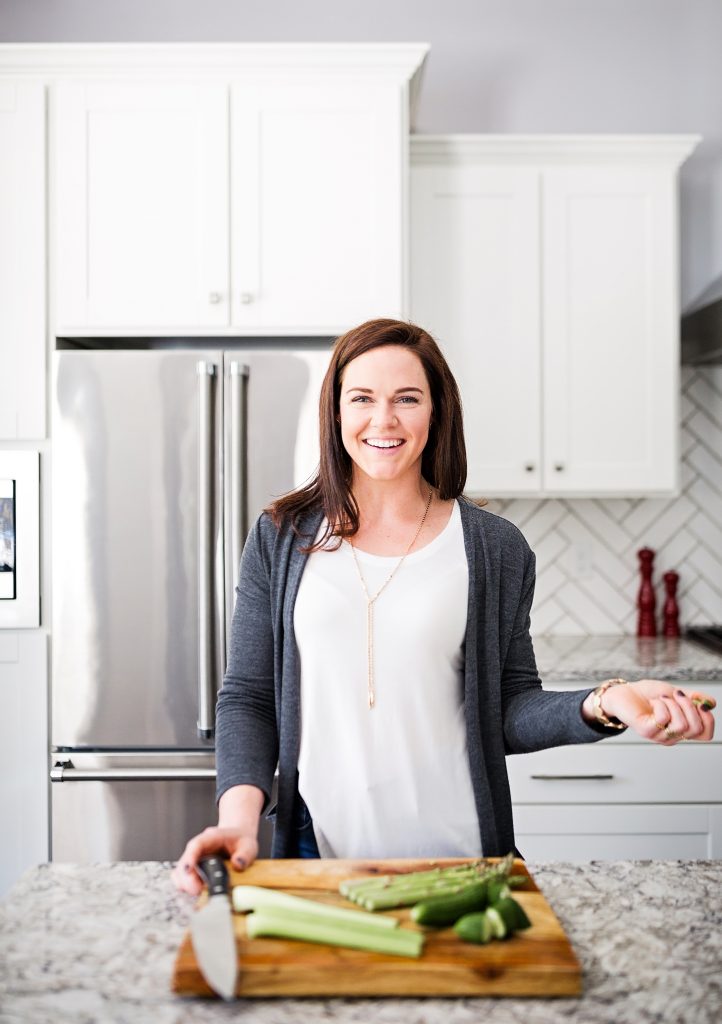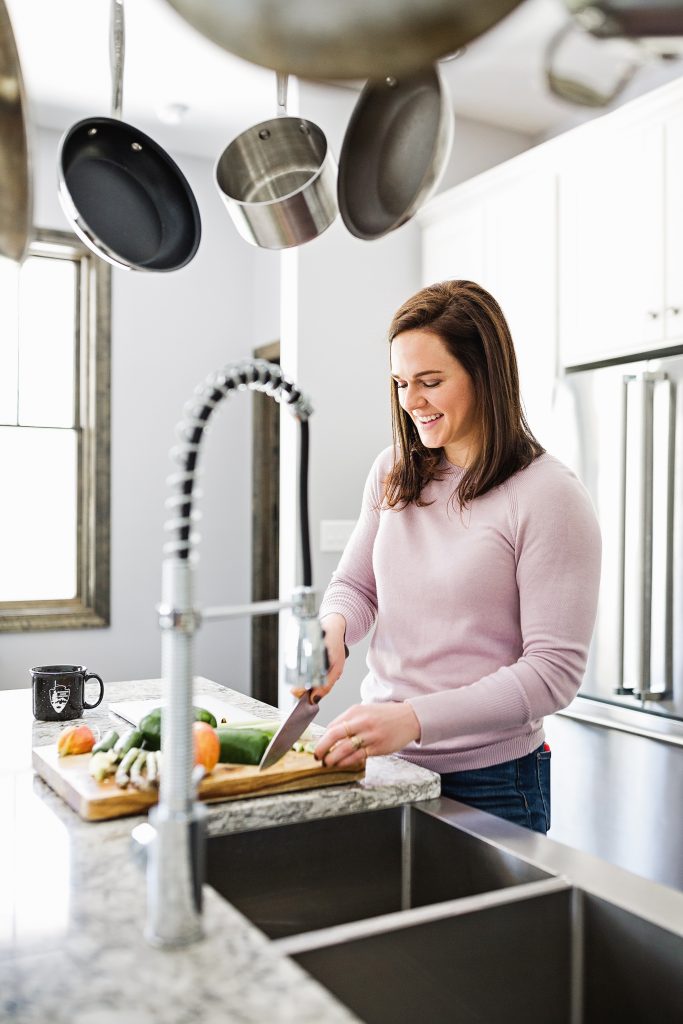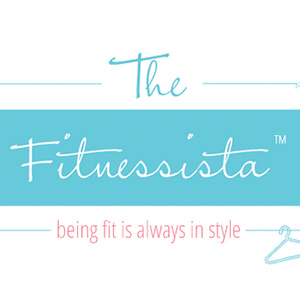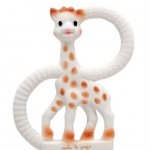How to Track Macros With a Social Life: Tips from A Macro Expert
Hi friends! I hope you’re having a lovely morning so far. I’m excited to have a special guest post on the blog today from a good friend of mine and someone who has helped me a lot: Emily Field.
Quick rewind for you: Back in 2018, I became curious about the concept of “tracking macros.” From what others were saying, macro-tracking was the best answer for satiating my appetite—while fueling my body in a healthy way that aligned with my fitness goals. But I was really sold when I heard that I didn’t have to sacrifice my social life or restaurant dining to make it happen.
Thanks to the rave recommendations from a few blogging friends, I connected with Emily Field, a Registered Dietitian who works with clients one-on-one or through her online course, Macros Made Easy.
Although there are free macro calculators online, I knew from experience the importance of building a strong knowledge foundation and getting a tailored, personalized approach. With Emily’s expertise, we were able to work together so that I could still keep up my essential girls’ nights and hit up my brother’s restaurants.
Macro counting changed my life and I used it for quite a long time to help keep me on track without that depriving diet nonsense. So, if you are macro-curious like I once was, I am thrilled that Emily agreed to take over my blog and share her best advice for getting started!
Here are some of the macro-tracking questions I remember having when I was getting started. I’ll let Emily take it from here!
How to Track Macros With a Social Life: Tips from A Macro Expert
How do you handle things like charcuterie boards and hor d’oeuvres when you’re tracking macros?
I knew it would be setting Gina up for failure if I foolished asked her to give up her girls’ night wine and charcuterie board dinners. Thankfully, there was no need! When we worked together, Gina decided that these nights weren’t worth tracking. With the bites and tastes of all different kinds of cheeses, crackers, fruits, and nuts, it would have proven impossible to track accurately.
Instead, the game plan was to eat nutrient-rich foods in well-rounded meals throughout the day, so as not to enter into girls’ night ravenous. Gina knew that her favorite foods were going to be higher in fat, so she ate meals that were lighter in fat leading up to the evening. She put a focus on protein and non-starchy vegetables during the day to make filling and satiating meals.
After gathering several weeks’ of data, we could identify some trends in Gina’s diet. Because she mostly ate well-rounded meals and hit her macro targets most days of the week, not tracking girl’s night didn’t interfere with her recomposition (lean muscle gain + fat loss) goals.
So many great restaurants don’t have macro information online. How do you handle macro tracking when you eat out at restaurants without macro information?
Unless you are going to a chain where every single dollop of butter is regulated, most chefs prepare meals with flavor in mind—not calories. As a general rule, you can anticipate that anything you order at a restaurant will be bigger, more caloric and higher in fat than what you would prepare at home.
So, while the macro information may not be spelled out anywhere, you should pad your best guess to account for some extra fat and carbs. The reason why is that tracking macros can be likened to budgeting: If you’re saving for something big, you’re gonna be watching the ins and outs of your checking account. Just like you’re watching the macro content of your meals to achieve health, body composition or athletic performance goals.
All that said, the “tighter the budget” or the more serious your nutrition goals, the more cautious you will want to be with restaurant meals. If you don’t see a life void of dining out (I certainly don’t!), you learn how to pick meals in which the ingredients can be easily identified, those that are on the “lighter” side, or simply save a chunk of your macros for the experience. Don’t sweat the fact that you will never know exactly what’s in your restaurant meal because perfection is not required in macro tracking in order to see progress.
I’ve outlined several ways to track macros effectively while dining out at restaurants if you want to learn more of the nitty-gritty details! (I also understand that many of us aren’t able to go out to restaurants right now, but we can still enjoy takeout food. Also, cooking at home is a great way to start to get the hang of macro tracking, which a lot of us are doing more frequently right now.)
Can you drink alcohol and achieve goals?
Yes, you can absolutely drink alcohol and achieve your goals! But your drinking habits may change when you start tracking macros: Alcohol offers no nutritional value, which means it’s not contributing to keeping your hormones humming, boosting your metabolism, increasing your muscle mass or contributing to your athletic performance. Unless you count your sweet dance moves after a couple shots of tequila!) Alcohol contains unusable calories, which, at a very basic level, is delaying you from seeing the changes in your body that you want to see.
With all of that in mind, I don’t set limits on my client’s alcohol consumption and I do help them work the calories into their targets for the day if they want to drink. However, most will find themselves cutting back and becoming much more mindful about drinking when they track macros.
My partner loves to cook for me and sometimes I don’t know *exactly* what goes into the meal. How do I track macros for instances like these?
Lucky you! Like with eating out at restaurants, there are several options here and the best choice for you depends on how diligent you need or want to be about hitting your macro targets. Psst! If you don’t know what your daily target macros are, you can download my DIY guide to figure them out yourself or hire my team to get a personalized macro calculation and custom recommendations.
In the least accurate example, you could eyeball the main components of your meal and estimate portion sizes in your food tracking app. If you’ve been paying attention to what your plate looks like when you weigh and measure your food for yourself, you should have a pretty good understanding of the looks of some portions. You could estimate 3-5 ounce of beef, fish or chicken, for example. You might even be able to estimate things like baked potato, rice, dressing on a side salad. Use your best, most educated estimation and don’t sweat the details.
Of course, you could ask your partner to give you an idea of what you’ll be having for dinner and pre-log the meal as best you can before you eat. This allows you to “eat around” the meal by manipulating the macro content of your other meals to better hit your macro targets by the end of the day. This might also give you some insight into the protein cut they’re using or cooking methods, which could change the macro content of the meal.
Meal kits like Hello Fresh and Blue Apron are great, but how do I hit my macro totals when I am not in charge of all of my food?
Meal kits are getting more and more people into the kitchen preparing their own food—it’s a great alternative to take-out or delivery from a food-quality and macro-friendly perspective! Most meal kit services have nutrition information available on their websites, so as long as you’re roughly following the recipe as intended, you can pre-log the meal in your tracker before you eat it. Pre-logging allows you to really hit your macro targets on the nose while enjoying the variety and “surprise” of meal kits.
I know that “tracking your macros” can feel intimidating. But, as I hope Gina’s experience with tracking her macros while still living her life goes to show, this is really a valuable, lifelong tool for designing a way of eating that works for you. If you are macro-curious, please feel free to reach out directly with your questions!
Next week, Emily will answer some of your burning questions about macros that you submitted through Instagram.
Have you tracked macros before? How would you define your eating and fueling philosophy?
See ya in the morning with a new barre video. Thank you so much for stopping by the blog today!
xoxo
Gina

















Really enjoyed this article. I tend only track Protein as like a target but I’m less strict with Carbs and Fat as long as they fit in my total calorie target – I still see progress. So sometimes I’m more low carb other times more low fat ..
Keeping track of your macro intake is extremely important for a healthy lifestyle along with a calorie deficit diet. Great post!